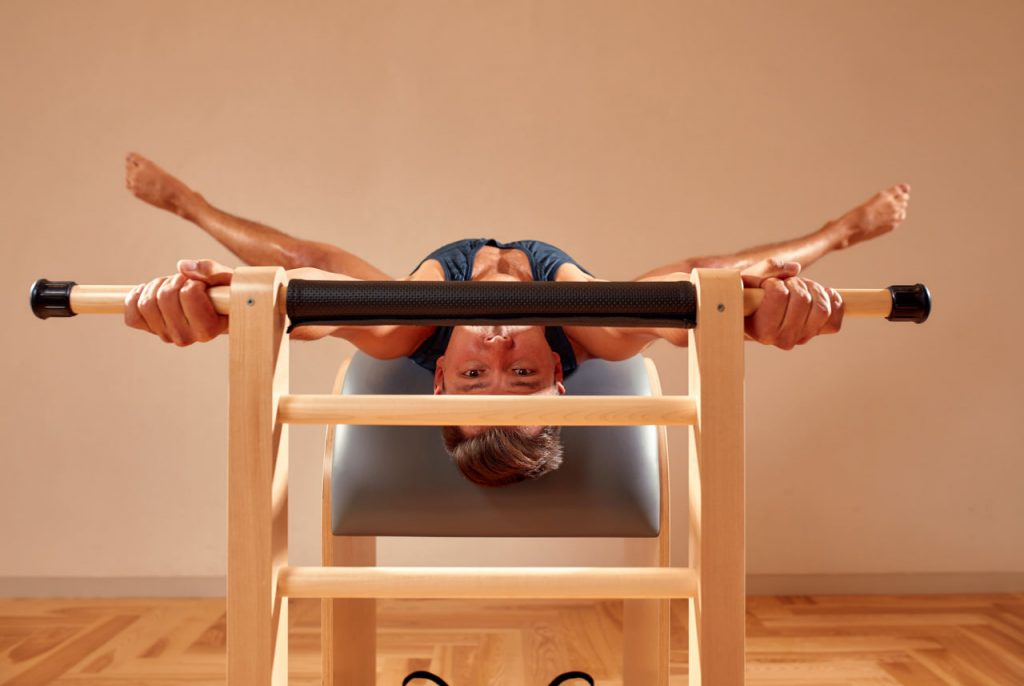If you’re new to Pilates, the practice might seem a little intimidating at first. However, once you break down the fundamentals, you’ll quickly see the tremendous benefits Pilates can bring to your flexibility, strength, and overall well-being. Pilates is known for its low-impact nature, making it suitable for people of all fitness levels. But for beginners, it’s essential to start with the basics to build a solid foundation.
In this article, we’ll introduce you to 5 essential Pilates exercises that are perfect for those just starting. These exercises are easy to follow, beginner-friendly, and will set you up for long-term success in your Pilates journey.
1. The Pelvic Curl
The pelvic curl is one of the most basic Pilates exercises that focuses on engaging your core and building pelvic stability. It’s a great warm-up movement that helps align your spine and activate important muscles in your lower body.
How to do it:
- Lie on your back with your knees bent and feet flat on the floor, hip-width apart.
- Inhale to prepare, then exhale as you slowly lift your hips off the mat by pressing into your feet. Your body should form a straight line from your shoulders to your knees.
- Inhale at the top and hold for a moment, then slowly lower back down to the mat, one vertebra at a time.
Why it’s essential: The pelvic curl helps activate your glutes, hamstrings, and core muscles, improving flexibility and muscle control, which are fundamental to every Pilates movement.
2. The Cat-Cow Stretch
The cat-cow stretch is a great exercise for improving spinal flexibility and mobilizing the lower back. It also helps to improve coordination and relieve tension in the spine and shoulders.
How to do it:
- Start on your hands and knees in a tabletop position, with wrists aligned directly under your shoulders and knees under your hips.
- On an inhale, arch your back, lifting your chest and tailbone toward the ceiling (this is the “cow” position).
- On an exhale, round your spine, tucking your chin toward your chest and bringing your tailbone under (this is the “cat” position).
- Continue flowing between these two positions for 5–10 rounds.
Why it’s essential: This movement increases spinal mobility, encourages deep breathing, and strengthens your core while stretching the back and neck muscles.
3. The Shoulder Bridge
The shoulder bridge is a powerful exercise for activating your glutes and core while improving spinal articulation and flexibility. It strengthens the lower back and pelvis, which is important for building balance and stability in Pilates.
How to do it:
- Lie on your back with your knees bent and feet flat on the floor, hip-width apart.
- Place your arms at your sides, palms down.
- Inhale to prepare, then exhale as you lift your hips off the floor, creating a straight line from your shoulders to your knees.
- Inhale as you hold the position at the top for a moment, then exhale as you lower your hips back down slowly.
Why it’s essential: The shoulder bridge works on activating your glutes, hamstrings, and core, strengthening your body’s foundation while improving posture and flexibility in your lower back and hips.
4. The Leg Circle
The leg circle is an excellent exercise for enhancing flexibility, strengthening your core, and improving hip mobility. It targets your abdominal muscles and hip flexors, making it a great movement to develop control over your lower body.
How to do it:
- Lie on your back with your arms by your sides and one leg extended toward the ceiling.
- Keeping the other leg bent and flat on the floor, circle your lifted leg in a controlled, smooth motion.
- Start with small circles and gradually increase the size. After 5–10 repetitions, reverse the direction of the circles.
Why it’s essential: This exercise helps to isolate and target the muscles of the lower body, particularly the hip flexors and lower abs, which are critical for balance and stability.
5. The Saw
The saw is a classic Pilates move that focuses on spinal rotation and stretches your hamstrings and lower back. It’s a fantastic exercise for improving overall flexibility and promoting a strong and supple spine.
How to do it:
- Sit with your legs extended straight in front of you, wider than shoulder-width apart.
- Stretch your arms out to the sides at shoulder height.
- Inhale as you twist your torso to the right, reaching your left hand toward your right foot while keeping your arms extended.
- Exhale as you return to the center and repeat the movement on the other side.
Why it’s essential: The saw promotes spinal rotation and stretches the hamstrings, helping to increase flexibility and range of motion in the spine, shoulders, and legs.
Final Thoughts:
Starting with these 5 essential exercises will set you up for success in your Pilates journey. As you become more comfortable with the movements and your core becomes stronger, you can progress to more advanced exercises. Pilates is all about controlled movements, so focus on form over speed and enjoy the process!

